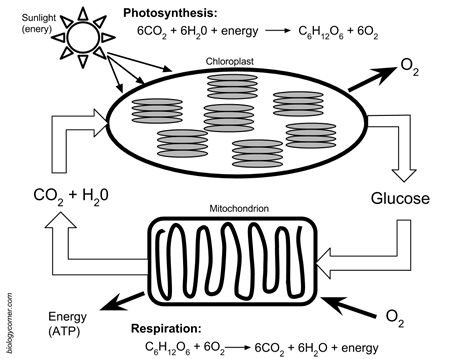Photosynthesis and Respiration
Lessons designed for 9-10th grade basic biology class and aligned to Next Generation Science Standards.
HS-LS1-5 :
Use a model to illustrate how photosynthesis transforms light energy into stored chemical energy.
HS-LS1-7: Use a model to illustrate that cellular respiration is a chemical process whereby the bonds of food molecules and oxygen molecules are broken and the bonds in new compounds are formed resulting in a net transfer of energy

Essential Questions:
1. What kinds of organisms perform photosynthesis?
Big Idea 1: Photosynthesis is performed by autotrophs
2. What are the reactants and the products of photosynthesis?
Big Idea 2: In photosynthesis, light energy is converted to stored chemical energy when autotrophs convert carbon dioxide and water into sugar and released oxgyen.
3. How is energy converted and stored in the process of photosynthesis?
Big Idea 2: In photosynthesis, light energy is converted to stored chemical energy when autotrophs convert carbon dioxide and water into sugar and released oxgyen.
4. What kinds of organisms perform cellular respiration?
Big Idea 3: Cellular respiration occurs in all living organisms
5. What are the reactants and products of cellular respiration?
Big Idea 4: In cellular respiration, sugar (glucose) and oxygen molecules are broken down into carbon dioxide and water, and energy is transferred and stored in a form of energy cells can use.
6. How is energy converted and stored in the process of cellular respiration?
Big Idea 4: In cellular respiration, sugar (glucose) and oxygen molecules are broken down into carbon dioxide and water, and energy is transferred and stored in a form of energy cells can use.
7. How are the reactants and products of photosynthesis and cellular respiration related?
Big Idea 5: The process of photosynthesis and cellular respiration form a cycle.
Unit Vocabulary
autotrophs
photosynthesis
cellular respiration
glucose
ATP (adenosine triphosphate)
reactant
product
Learning Activities
Reading: Connecting Cellular Respiration & Photosynthesis (CK-12)
Chicago Tylenol Muders: A Case Study in Cellular Respiration